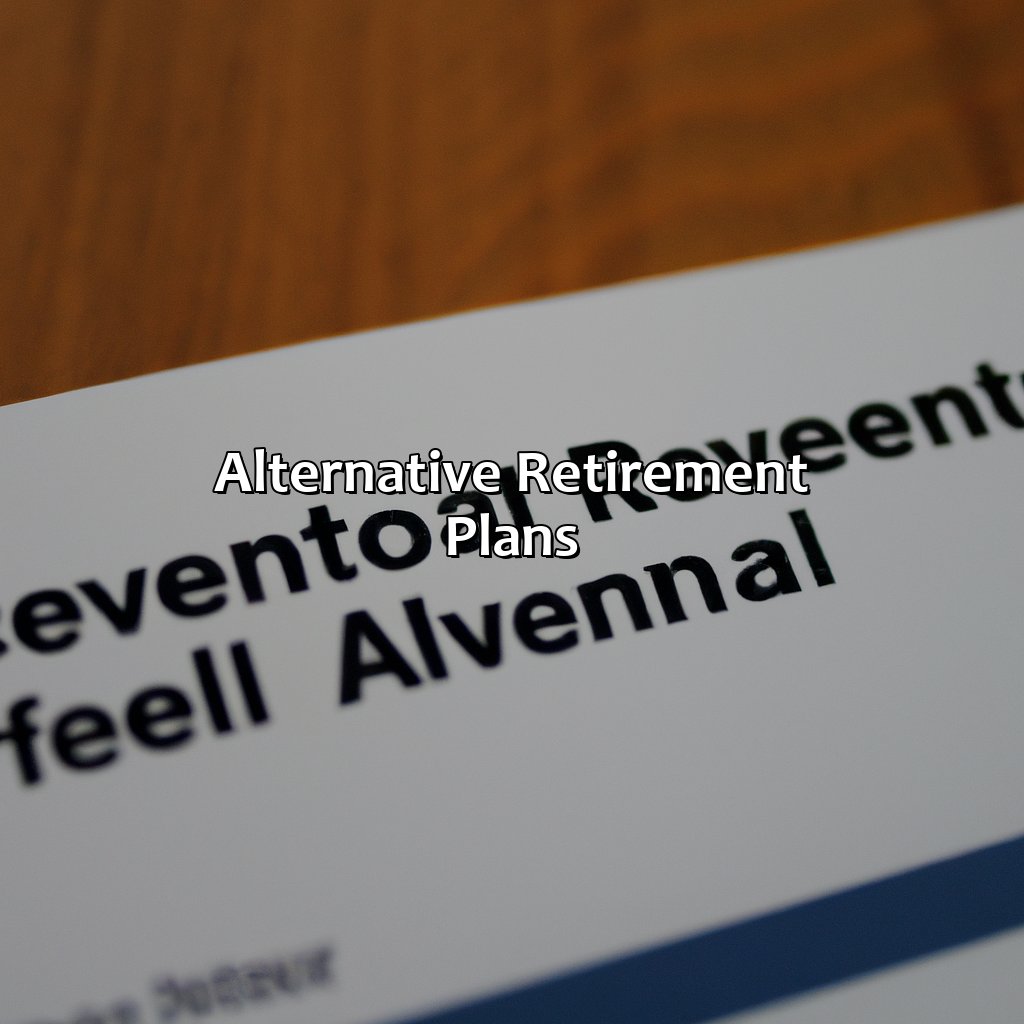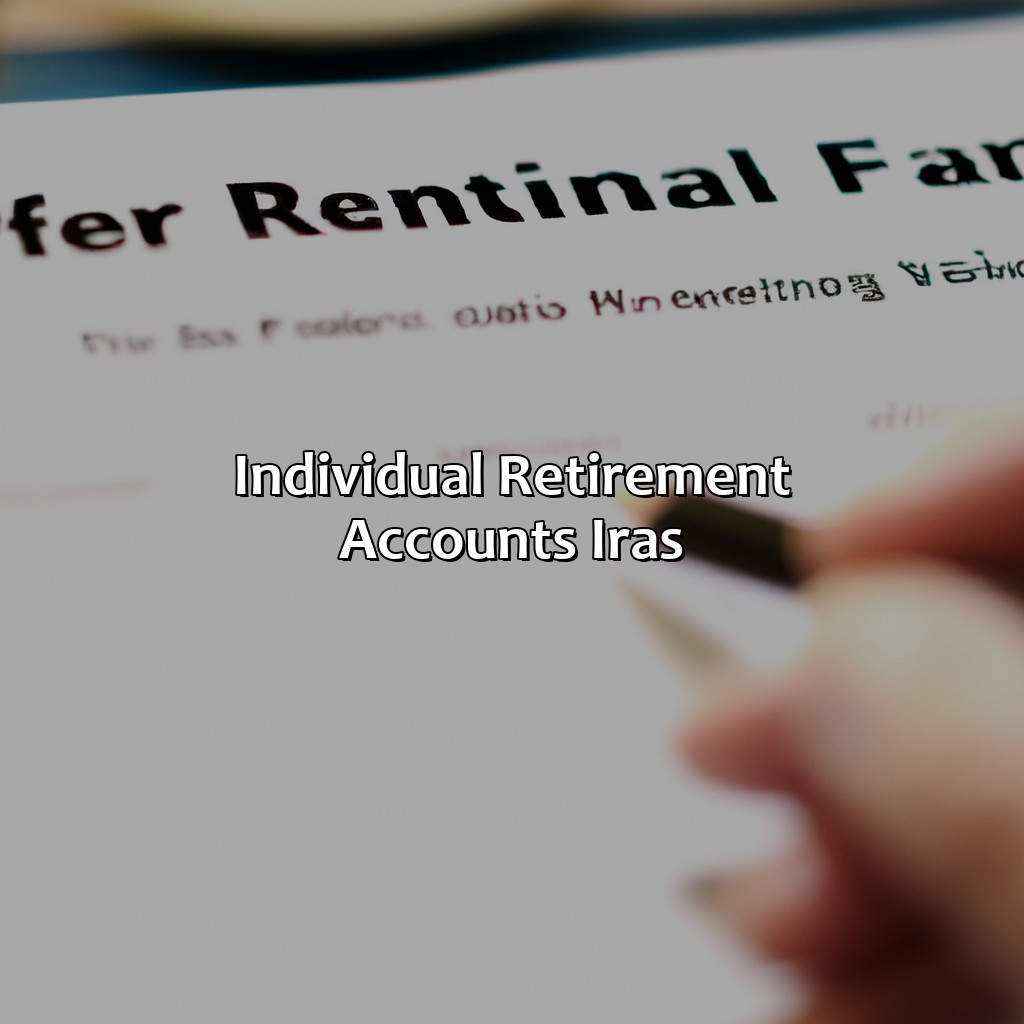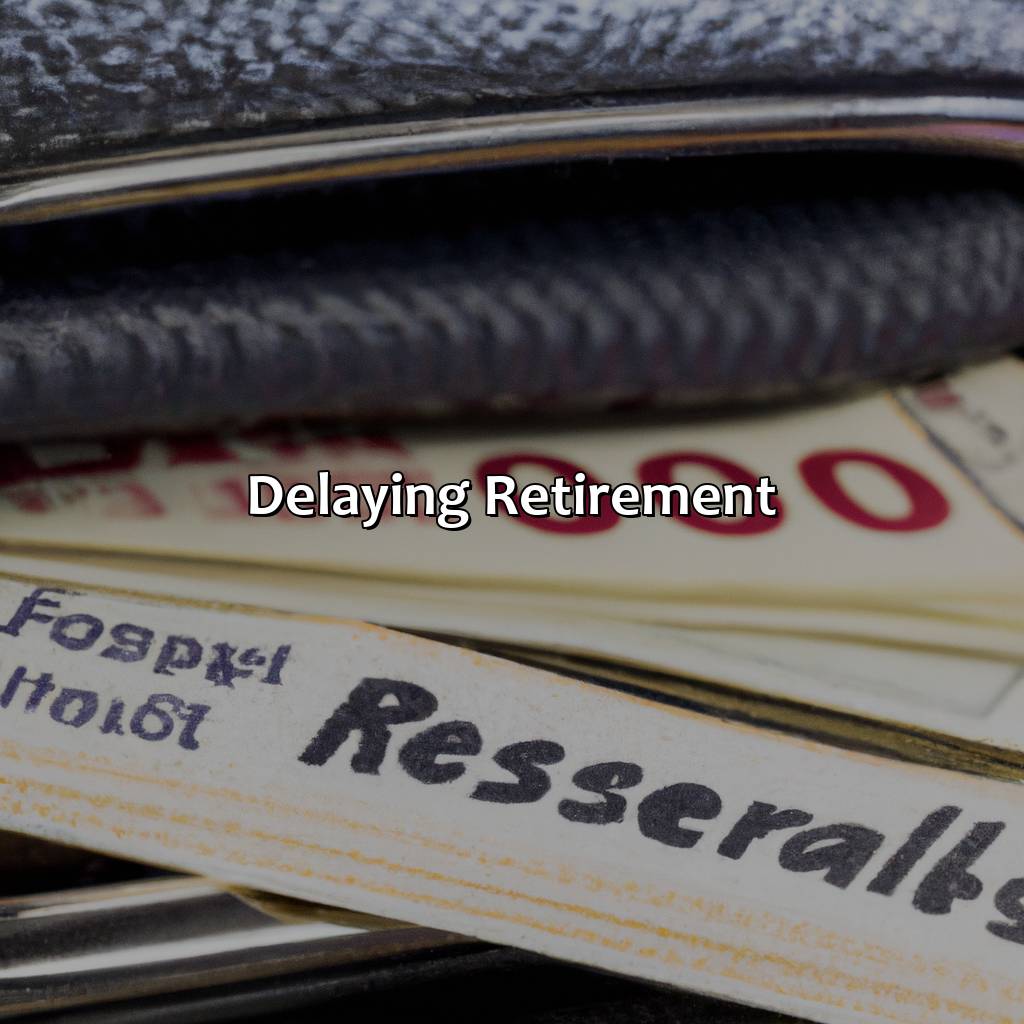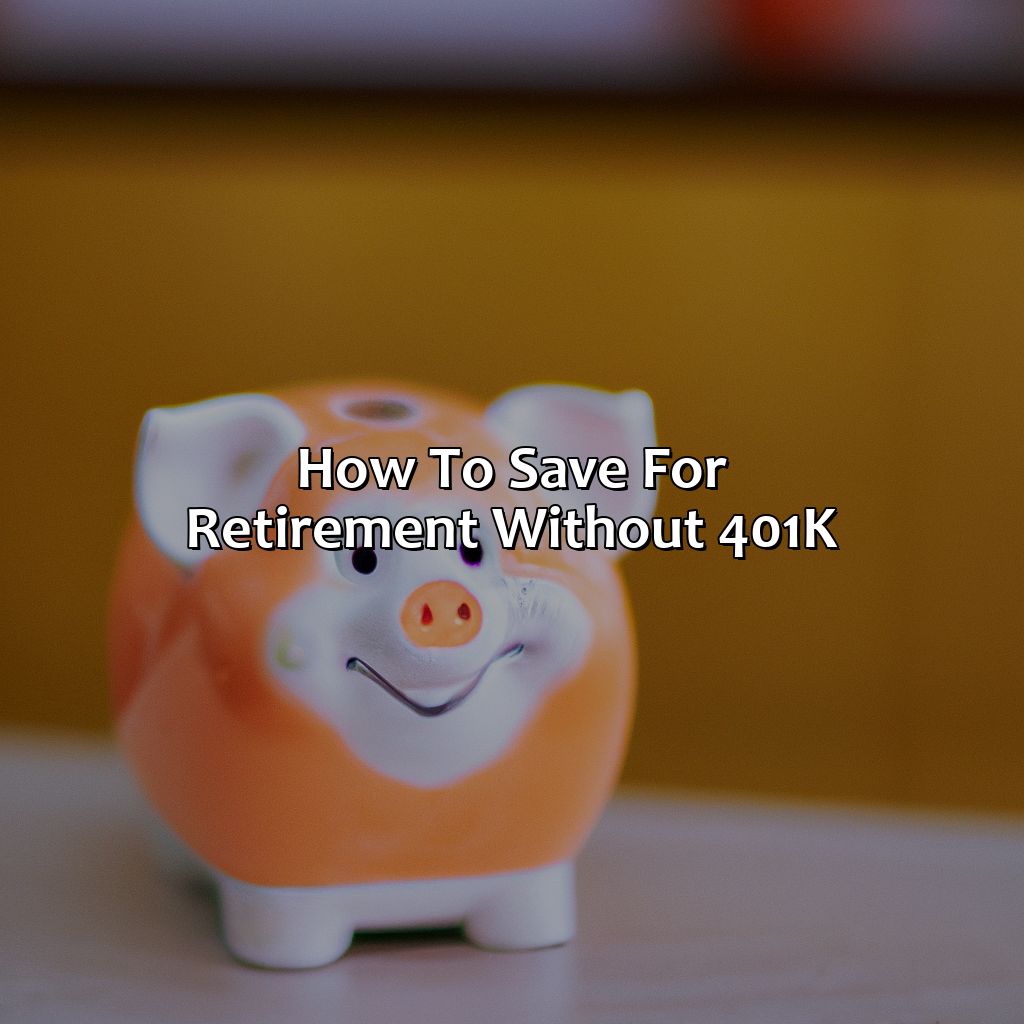How To Save For Retirement Without 401K?
Key Takeaway:
- Alternative retirement plans exist outside of 401k plans, such as pensions, annuities, and Social Security benefits, that can be used to supplement retirement income.
- Individual Retirement Accounts, or IRAs, are tax-advantaged retirement savings accounts that come in two main types: traditional IRAs and Roth IRAs. Traditional IRAs allow for tax-deductible contributions, while Roth IRAs allow for tax-free withdrawals in retirement.
- Investing in real estate can be a viable retirement strategy through rental properties or house hacking, which involves living in one unit of a multi-unit property while renting out the others for income.
- Starting a business or side hustle, such as freelancing or selling products online, can provide additional income and potentially even grow into a full-time retirement income.
- Delaying retirement by working longer, either full-time or part-time, can provide additional time to save for retirement and reduce the length of retirement that needs to be funded.
Are you worried about how to save for retirement without a 401K? You don’t need to feel stuck. With the right tools and strategies, you can plan for a secure financial future. Discover how to save for retirement without relying on your 401K.
Alternative Retirement Plans
Alternative Retirement Plans
Planning for retirement is a critical aspect of financial management. A variety of retirement options, including defined benefit plans, individual retirement accounts (IRAs), and annuities, are available for those without 401k plans. Defined benefit plans are offered by many employers, but they are becoming increasingly rare. IRAs offer a simple and cost-effective option for retirement planning, with tax-advantaged contributions and withdrawals. Annuities, which operate similarly to insurance policies, can also provide a steady income stream in retirement.
Consider setting up an IRA to begin saving for retirement. If you are self-employed, a Simplified Employee Pension (SEP) IRA or a Solo 401k may be a better option. An indexed or variable annuity may be worth considering if you want a guaranteed income stream in retirement, but beware of high fees and restrictions on withdrawals.
According to the U.S. Department of Labor, only about half of all American workers have access to employer-sponsored retirement plans. It’s essential to have a plan in place for your future, regardless of whether you have a 401k. Start saving early and explore alternative retirement plans to ensure a financially secure retirement.
True fact: One-third of workers in the private sector have no retirement savings plan, according to the U.S. Bureau of Labor Statistics.

Image credits: retiregenz.com by Adam Jones
Individual Retirement Accounts (IRAs)
Retiring without a 401k? No worries! IRAs could be your best bet. Learn about Traditional and Roth IRAs to get the most out of them. These subsections have lots of features that can help your retirement savings. So, check them out!

Image credits: retiregenz.com by James Duncun
Traditional IRA
A conventional type of IRA that allows people to deposit pre-tax money into a retirement account for future use without any tax repercussions at the time of deposit. This NLP variation of”Traditional IRA” helps individuals save money on taxes and provides them with an opportunity to grow their funds tax-deferred until they are withdrawn after retirement. Investments made in this account include stocks, bonds, mutual funds, and other forms of revenue-generating securities.
Individuals aged below 50 can contribute up to $6,000 annually while those older than 50 years can add $7,000 in their accounts each year (plus additional ‘catch-up‘ contributions- a semantic variation to later headings). Withdrawals taken from Traditional IRA retirement accounts before the age of 59 may result in hefty penalties. Additionally, while Traditional IRAs enable individuals to reduce taxable income through annual deposits in traditional tax years, they may deduct money from their Roth IRAs during non-traditional tax years.
The history of NLP Traditional IRA records demonstrate that this type of savings account has been available since 1974 as mandated by Employee Retirement Income Security Act (ERISA) code. The government designed it as an alternative way for people who do not have access to employer-sponsored retirement plans such as the 401(k).
A Roth IRA is like a unicorn – rare, magical, and only a lucky few can claim to have one.
Roth IRA
A Retirement Investment Account (ROTH) provides tax-free money for retirement savings. Contributions are made with post-tax dollars, and qualified withdrawals taken after age 59.5 are tax-free with no required minimum distributions. It is a flexible investment vehicle with no age limits to contribute, no required distributions, and tax-free withdrawals in your retirement.
ROTH IRA can be utilized by people who have a long-term horizon, invest regularly, and want to diversify their portfolio beyond traditional 401(k)s. Annual contributions max out at $6k for those younger than age 50 and $7k for those over 50 years old.
These accounts provide benefits such as setting aside money for a dependent’s education or early withdrawal up to the amount deposited without penalty under qualifying circumstances. Moreover, ROTH IRA offers more opportunities for investment choices than traditional IRAs.
Pro Tip: Start contributing towards a ROTH IRA now if you do not qualify for a workplace 401(k). Even if you cannot contribute the max contribution limit annually initially, every little bit helps as it grows over time.
Real estate investing: the only way to guarantee you’ll be constantly reminded of your mortgage for the rest of your life.
Investing in Real Estate
Investing in property with your retirement savings without a 401k? Consider rental properties and house hacking!
These can give you passive income, plus equity through real estate investments. Diversify your portfolio with these two approaches to real estate investment for retirement.
Benefits? The benefits of investing in rental properties and house hacking include the potential for passive income and equity growth through real estate investments.
Potential drawbacks? Some potential drawbacks to consider include the costs of maintenance and repairs on rental properties, the need to be a responsible landlord, and the risks associated with a market downturn or economic instability.
Let’s explore them!

Image credits: retiregenz.com by Joel Washington
Rental Properties
Rental properties are a conventional investment option for retirement savings. They offer various benefits, including secure cash flow, tax advantages and long-term appreciation potential.
- Rental Properties have a steady stream of income.
- The ability to leverage your investment can lead to higher returns.
- The value of the property grows over time like other appreciating assets.
To maximize the potential of rental properties as an investment option for retirement planning, it is essential to research and locate profitable markets and select the ideal properties carefully.
Many successful real estate investors have built their fortune in this way by acquiring a rental property portfolio in high growth areas.
In the 19th century, Leland Stanford, co-founder of Stanford University invested his wealth heavily in real estate and owned multiple rental properties throughout California. His success led him to become Governor of California.
Who needs roommates when you can just build a moat around your property and charge tolls?
House Hacking
One way to invest in real estate without a traditional retirement plan is by implementing a strategy called ‘property hacking.’ This involves buying property with the intention of renting out a portion or all of it, offsetting the expenses and generating income. The strategy can help build equity and enable reinvestment for even more properties.
By selecting a multi-unit property, such as a duplex or triplex, investors can live in one unit and rent out the others. Alternatively, they can rent out rooms in their primary residence through platforms like Airbnb or Roommate Finder. This generates passive income and helps to cover mortgage payments while increasing the value of the property.
To maximize returns, effective management practices are necessary. Investors should treat their rental units as businesses, analyzing trends in demand, supply and pricing to determine optimal pricing strategies and occupancy rates.
Employing this approach allows individuals who lack access to 401k plans or prefer alternative investment options the opportunity to create streams of passive income while realizing long-term appreciation gains in their properties.
Who needs a 401k when you can just start a business and rely on pure luck and determination?
Starting a Business or Side Hustle
Retirement savings don’t have to rely on 401k. Try a business or side hustle instead! Freelancing and selling products are two great options – you’ll make money on your own terms, plus save for retirement. Build that nest egg!

Image credits: retiregenz.com by Adam Arnold
Freelancing
Earning Through Independent Contracting
Independent contracting can be an excellent opportunity for those who wish to earn income without being bound by the traditional 9-5 work model. As a freelancer or independent contractor, you have the flexibility to choose your own projects and clients, allowing you to control your workload and work schedule.
Incorporate Your Business and Save More on Taxes
By incorporating your freelance business, you can save more money on taxes. For example, a single-member LLC can help you avoid paying double taxes and provide other tax benefits. Apart from that, it also helps in separating your personal assets from business assets – protecting both of them.
Don’t Miss Out on Retirement Savings
While freelancing may offer immediate financial benefits, it is essential to plan for long-term financial security by saving enough for your retirement. Open individual retirement accounts like Roth IRA or Traditional IRA instead of 401k plans which are available through an employer.
Secure Your Future Now!
Even if retirement seems too far away right now, the best time to start planning for it was yesterday – don’t wait another day! Start with small monthly contributions to an IRA account or other retirement savings accounts and watch them grow over time. Secure your future now – start saving!
Get rich or die trying to sell your products online-just don’t forget to save for retirement too.
Selling Products Online
Selling Physical Products Online
- Create an E-commerce store and set up a payment gateway.
- Constantly generate traffic by running SEO campaigns and PPC ads.
- Focus on customer support to retain clients and get positive reviews
- Cut costs by using efficient inventory management tools and third-party logistics providers.
Using social media to Sell Products:
- Create engaging content that showcases your product well.
- Promote it across all social media platforms by running paid ads or using influencer marketing techniques.
- Use referral marketing schemes to incentivize people to refer your product to others.
- Frequently engage with the audience, answer queries, and resolve complaints in a timely manner.
Running a Dropshipping Business:
- Select an appropriate niche with high profitability margin
- Choose suppliers who offer competitive pricing and good quality products
- Use advanced dropshipping tools that help you automate the process of order fulfillment from supplier channels
- Increase engagement on social media platforms by offering exclusive deals or discount codes.
A small but effective way of selling products lies in being active traders on beneficial e-commerce platforms like eBay, Amazon, Alibaba etc.
According to Forbes Magazine report, Kate Dielman CEO of Framebridge was able to save $10 million after she started her own company over her career-spanning 20s.
Delaying retirement is just the adult version of procrastination, but with a lot more gray hairs involved.
Delaying Retirement
Postponing retirement due to a lack of 401k? Working more or taking a part-time retirement could be possible solutions. Let’s look at the advantages of delaying retirement. We will explore two methods: working longer and part-time retirement. These are options worth thinking about.

Image credits: retiregenz.com by Yuval Duncun
Working Longer
To Extend Your Time in the Workforce
As retirement may not be an option you are considering, it could be worthwhile to look at ways of extending your time working. Continuing to work longer can not only provide financial security, but keep you more active and socially engaged.
One way of extending employment is through exploring other job opportunities or switching from a full-time role to part-time or contract work. Another way is by re-skilling or upskilling yourself in different areas that will make you more valuable in the workforce.
Consider reducing your living expenses where possible, and creating a solid budget that incorporates what you need to cover for day-to-day living while also saving for retirement. Being proactive and seeking advice from financial experts can help with structuring methods of saving towards your retirement goal.
Remember, delaying retirement requires as much diligence as preparing for it ahead of time.
Who says retirement has to be all or nothing? Embrace the part-time retirement lifestyle and have your cake and eat it too, just make sure you save some frosting for later.
Part-Time Retirement
For those looking to ease into retirement, a feasible option is shifting to ‘Retirement Redefined.’ Work part-time or use flexible work arrangements post-retirement. This helps deliver enough cash flow for an enjoyable retired-life, all while maintaining work independence.
The era of working full-time till retirement and then retiring isn’t ideal for everyone. People are now opting for part-time positions or turning their hobbies into profitable side hustles during retirement. Creating your schedule allows balancing personal and work life, reducing stress and feelings of isolation.
However, a cumulative effect of not having a 401k plan needs consideration. One must consistently prepare by investing in low-risk investments long before retirement age. Also, consult financial advisors to determine risks and rewards efficiently.
FOMO (Fear Of Missing Out) provides additional motivation to begin planning today. Investing early ensures stability in later years when several unanticipated expenditures may arise. Don’t regret your inability to retire on time by floundering in unnecessary debt traps later.
Five Facts About Saving for Retirement without 401k:
- ✅ Individuals without 401k can still save for retirement through Individual Retirement Accounts (IRAs). (Source: Forbes)
- ✅ IRAs have contribution limits, which vary based on age and income. (Source: IRS)
- ✅ Self-employed individuals can establish Simplified Employee Pension (SEP) IRAs for retirement savings. (Source: NerdWallet)
- ✅ Health Savings Accounts (HSAs) can also be used as a retirement savings tool for individuals with high-deductible health plans. (Source: CNBC)
- ✅ Investing in a diversified portfolio of stocks, bonds, and mutual funds can help build a retirement nest egg outside of traditional retirement accounts. (Source: Investopedia)
FAQs about How To Save For Retirement Without 401K?
Q: What are some alternatives to a 401k for saving for retirement?
A: There are several options for saving for retirement without a 401k, such as opening a traditional or Roth IRA, contributing to a Health Savings Account (HSA), or investing in a taxable brokerage account.
Q: How does an IRA differ from a 401k?
A: An IRA is an individual retirement account that can be opened by anyone who earns income, while a 401k is only available through an employer. Additionally, contribution limits for an IRA are lower than for a 401k, but IRAs offer more investment options and flexibility in choosing investments.
Q: Can I still receive tax benefits for retirement savings without a 401k?
A: Yes, contributions to an IRA or HSA may be tax-deductible or tax-free, depending on the type of account and your income level. Additionally, investing in a taxable brokerage account may still offer some tax benefits, such as long-term capital gains tax rates.
Q: How much should I be saving for retirement without a 401k?
A: The general rule of thumb is to save 10-15% of your income for retirement, regardless of whether you have a 401k or not. However, the specific amount you should save depends on factors such as your age, expected retirement expenses, and other sources of retirement income.
Q: Is it ever too late to start saving for retirement without a 401k?
A: It is never too late to start saving for retirement, regardless of your age or financial situation. You may need to make some adjustments to your retirement goals based on your timeline and available resources, but every bit of savings can make a difference in your retirement income.
Q: What if I still want to save more than the contribution limits for an IRA?
A: If you have maxed out your IRA or other retirement account, you can still invest in a taxable brokerage account, which allows for unlimited contributions. You may also want to consider other investment vehicles, such as real estate or starting a small business, to save for retirement.







